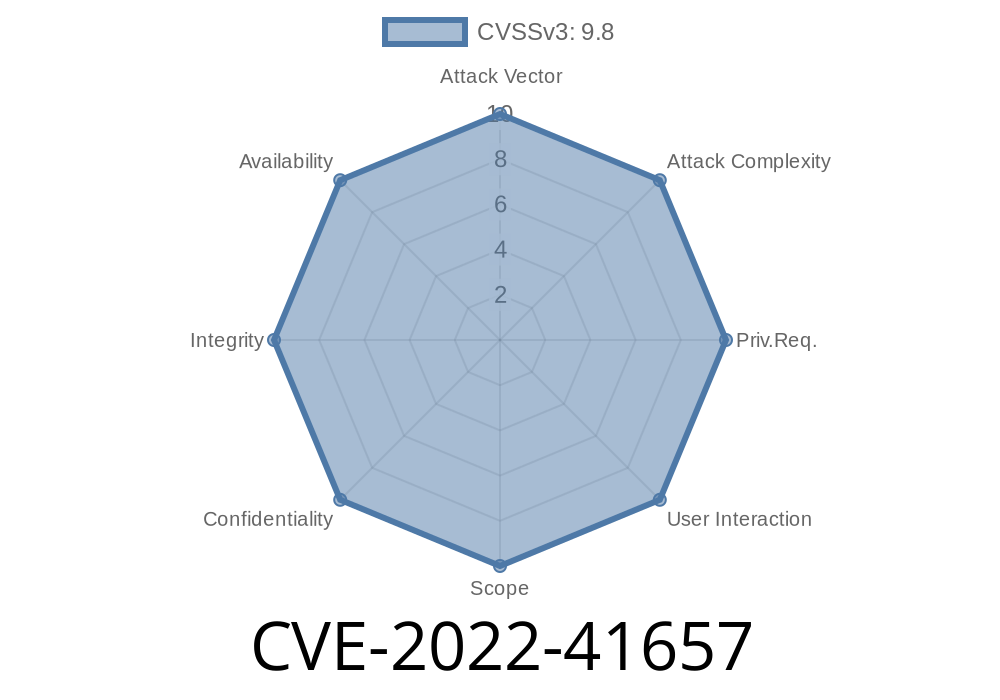In this long-read post, we will explore the details of a recently discovered vulnerability in Delta Electronics InfraSuite Device Master software, specifically affecting versions 00.00.01a and prior. The vulnerability, identified as CVE-2022-41657, allows a potential attacker to provide data already serialized into memory to be used in file operation APIs. This could lead to the creation of arbitrary files, which could then be used in further API operations, ultimately resulting in remote code execution.
We will delve deep into the workings of this exploit and its background, providing code snippets and links to original references. This in-depth analysis will help you better understand the vulnerability and prepare for potential impact.
Background of Delta Electronics InfraSuite Device Master
Delta Electronics InfraSuite is a data center infrastructure management (DCIM) system designed to simplify, automate, and optimize data center operations. The software provides a wide range of management features, including performance monitoring, capacity planning, and environmental monitoring. The Device Master component is responsible for managing and aggregating information from all connected devices, such as power distribution units, cooling units, and monitoring sensors.
The Vulnerability - CVE-2022-41657
This particular vulnerability exists in the way Delta Electronics InfraSuite Device Master handles file operations within its application programmable interfaces (APIs). An attacker can provide data that is already serialized into memory, which the software blindly trusts and allows to be used in file operation APIs. This can lead to the creation of arbitrary files on the target system, which can then be used in further API operations, ultimately leading to remote code execution.
Here's a simplified code snippet demonstrating the vulnerability
# Simplified code snippet illustrating the vulnerability in Delta Electronics InfraSuite Device Master
def process_request(request):
# Deserialize the requested data into memory
serialized_data = deserialize(request)
# Perform the insecure use of the attacker-provided serialized_data
perform_file_operation(serialized_data)
# Perform further API operations and potentially execute the attacker's code
execute_arbitrary_code(serialized_data)
Exploiting the Vulnerability
To exploit this vulnerability, an attacker would craft a specially formatted request containing serialized data that would cause the InfraSuite Device Master to create an arbitrary file on the target system. This crafted request would be sent to an affected version of the software, causing the vulnerable code to execute, potentially leading to remote code execution.
Here's an example of a proof-of-concept exploit
import requests
# Configuration
target_ip = "192.168.1.100" # The IP address of the target InfraSuite Device Master
serialized_data = "..." # The attacker-provided serialized data
# Send the crafted request
url = f"http://{target_ip}/InfraSuite/vulnerable_endpoint";
headers = {"Content-Type": "application/octet-stream"}
response = requests.post(url, data=serialized_data, headers=headers)
# Check for successful exploitation
if response.status_code == 200:
print(f"Exploit successful: {response.text}")
else:
print(f"Exploit failed: {response.text}")
There are several steps organizations can take to address this vulnerability
1. Update Delta Electronics InfraSuite Device Master to the latest version: Delta Electronics has remediated this vulnerability in the latest version of the software. Organizations should contact their vendor for the latest software release and install it as soon as possible.
2. Implement network segmentation and protect the vulnerable system: Limit exposure by placing the InfraSuite Device Master behind a firewall and only allow trusted IPs access to the software.
3. Apply the principle of least privilege and secure API access: Make sure only users and systems requiring access have permission to interact with the InfraSuite Device Master APIs.
4. Closely monitor and review logs: Keep an eye on logs for indicators of a potential attack or exploitation attempts.
Links to Original References
1. CVE-2022-41657 - National Vulnerability Database (NVD)
2. Delta Electronics - InfraSuite Device Master Homepage
3. Delta Electronics - Security Notification on the Vulnerability
Conclusion
CVE-2022-41657 is a critical vulnerability affecting Delta Electronics InfraSuite Device Master software, which could potentially lead to remote code execution. By understanding the details of this vulnerability and taking appropriate steps to mitigate the risks, organizations can help protect their data center infrastructure. Stay vigilant and ensure your software is up to date to maintain a strong security posture.
Timeline
Published on: 10/31/2022 20:15:00 UTC
Last modified on: 11/02/2022 14:04:00 UTC
